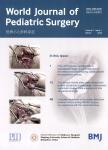Characteristics and trends of pediatric firepit burns: insights for prevention and safety
作者机构:Johns Hopkins School of MedicineBaltimoreMarylandUSA Department of SurgeryDivision of Pediatric SurgeryJohns Hopkins School of MedicineBaltimoreMarylandUSA Division of the Biological SciencesUniversity of ChicagoChicagoIlinoisUSA School of MedicineAmerican University of BeirutBeirutLebanon
出 版 物:《World Journal of Pediatric Surgery》 (世界小儿外科杂志(英文))
年 卷 期:2024年第7卷第1期
页 面:54-58页
核心收录:
学科分类:1002[医学-临床医学] 100214[医学-肿瘤学] 10[医学]
主 题:burns admitted prevention
摘 要:Introduction As fire pits grow in popularity,so do the associated burn injuries.Our study examines pediatric fire pit burns characteristics to raise awareness and promote safety precautions.Methods We conducted a retrospective review of pediatric patients(21 years)with firepit burns at a tertiary care hospital from 2016 to 2021.Results Eighty-four patients were identified,of whom 70.2%were male,with a median age of 62 months.The median percent total body surface area burned was 2%(interquartile range(IQR)=1-4).Thirty-five(41.7%)patients were admitted and 7(8.3%)underwent grafting.Neck and trunk burns had the highest grafting rates(66%and 33%,respectively).The hands(41.7%)and the lower extremities(27.4%)were the most frequently burned body areas.The leading causes of burns were ashes/hot coals(34.5%),flames(31.0%),and direct contact(25.0%),often resulting from falling into the fire(59.5%)or running or playing in activities near it(26.2%).Thirty-five(41.7%)were admitted for inpatient management,while 49(58.3%)were treated as outpatient.Eleven(13.2%)underwent at least one reconstructive surgery,7(8.4%)had at least one rehabilitation visit,and 65(77.4%)had follow-up clinic visits.The median length of stay was 2 days(IQR=1.0-3.5).The peak months for burns were from August through October(n=40,46.0%),with an increase observed from 10 cases in 2016to 20 cases in 2020.Conclusions Given the significant proportion of firepit burns resulting from unsafe fire behaviors,it is crucial that caretakers are aware of proper firepit safety precautions.Level ofevidence Il.



